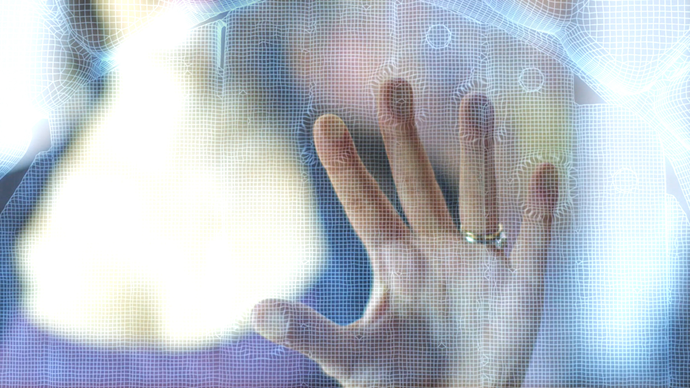Touch: a survival tool and key means of communication
As Heather Macdonald Tait, Marketing Communications, Ultrahaptics explains, touch is the first sense that we experience in the womb. Though just one of five senses we use to relate to the world around us, the value of touch - formed from the activation of neural receptors in the skin and hair follicles, as well as some organs - is inestimable for survival.
Without touch, we wouldn't feel pain, sense temperature differences or develop a reliable body image, meaning we would constantly be tripping over our feet or reaching to the wrong place for things.
Like our other senses, touch can generate powerful emotional connections that transcend the physical or cerebral. A parents’ cradling hug or affectionate stroke is an innate gesture, designed to build strong emotional attachment within a child, and indeed, affectionate touch has been proved to be necessary for physical, mental and emotional development. Most children are highly receptive to touch. If you watch a baby or small child interacting with something new, it is clear that the information gleaned from their sense of touch is as valuable a means of understanding the object as other senses.
Unlike the other senses, our sense of touch stays with us for life and when we lose the power of other senses, it can ’take over’ or become more refined. Our sense of touch allows us to dive into our pockets, select a specific coin, receipt or ticket, often without needing to even validate our choice by sight. Through our sense of touch, we can discriminate between objects we cannot see. It sends us confirmation of what we have found and gives us the information where to grasp and how much pressure we need to apply. Touch helps us find the light switch in the dark, pull our car keys from the depths of a bag, find the keys on our keyboard. Those little steps on letters ‘F’ and ‘J’ are indispensable to the touch typist.

Conversely, over time, our perception of the value of touch tends to wane as we rely more heavily on vision, hearing, smell and taste. Notably, when we talk about vision, we refer to something more than just sight. ‘Visual acuity’ is the process of deriving meaning from what is seen, explaining why vision takes so much more brain power than other senses to process. Despite this, in most cultures around the world, touch remains an intuitive reflex - when we meet people we are compelled to make a physical connection through the shaking of hands, a gentle kiss on the face, or a Scandinavian-style bear hug!
As human brains develop, we use personal experience to apply subjective values to touch. Children are often intrigued by slimy textures, and as adults this changes, invariably to disgust. Touch becomes important to our real world retail experiences, helping us evaluate perceived quality by the smoothness, crispness and thickness of an item. Through touch, we allocate an evaluation of quality to smooth bed linen, a crisp, starched white shirt, or the response of a switch or dial on the dashboard of a car. Notably, these qualities cannot be assessed when we shop online and sometimes, this lack of tactile information leads to disappointment upon delivery.
Just like online retail experiences, the lack of tactile feedback is a recurring criticism of virtual reality. Ultrahaptics’ ultrasound generators allow people to ‘feel’ and manipulate virtual objects in the air, so it will be of no surprise that virtual/augmented reality is a key application area for Ultrahaptics technology. The ability to stimulate our sense of touch could make virtual experiences so much more compelling. Indeed, in years to come, it is likely that the differentiator between virtual reality experiences will lie in the extent to which other senses than vision and hearing were stimulated, the key one being touch.


